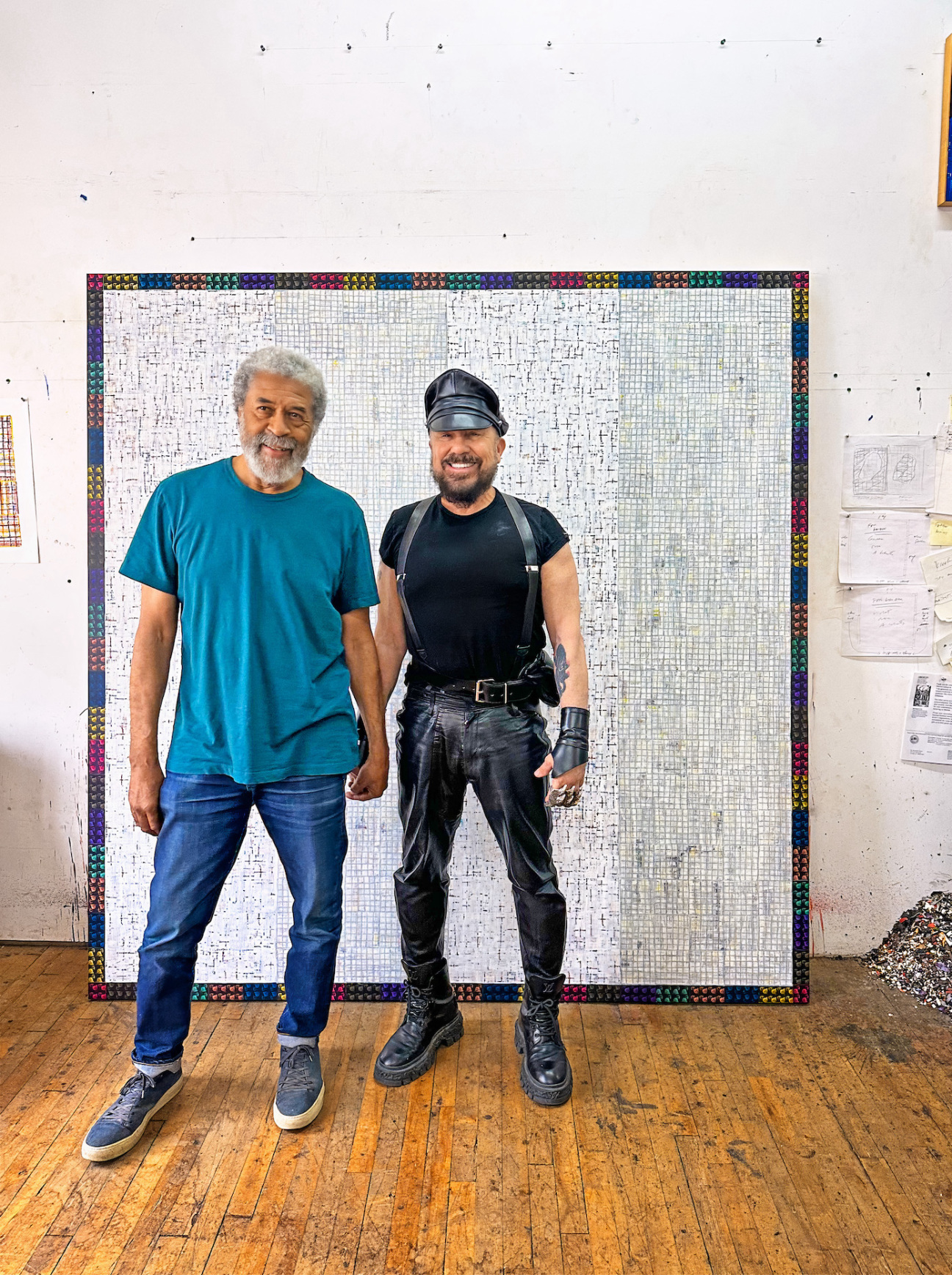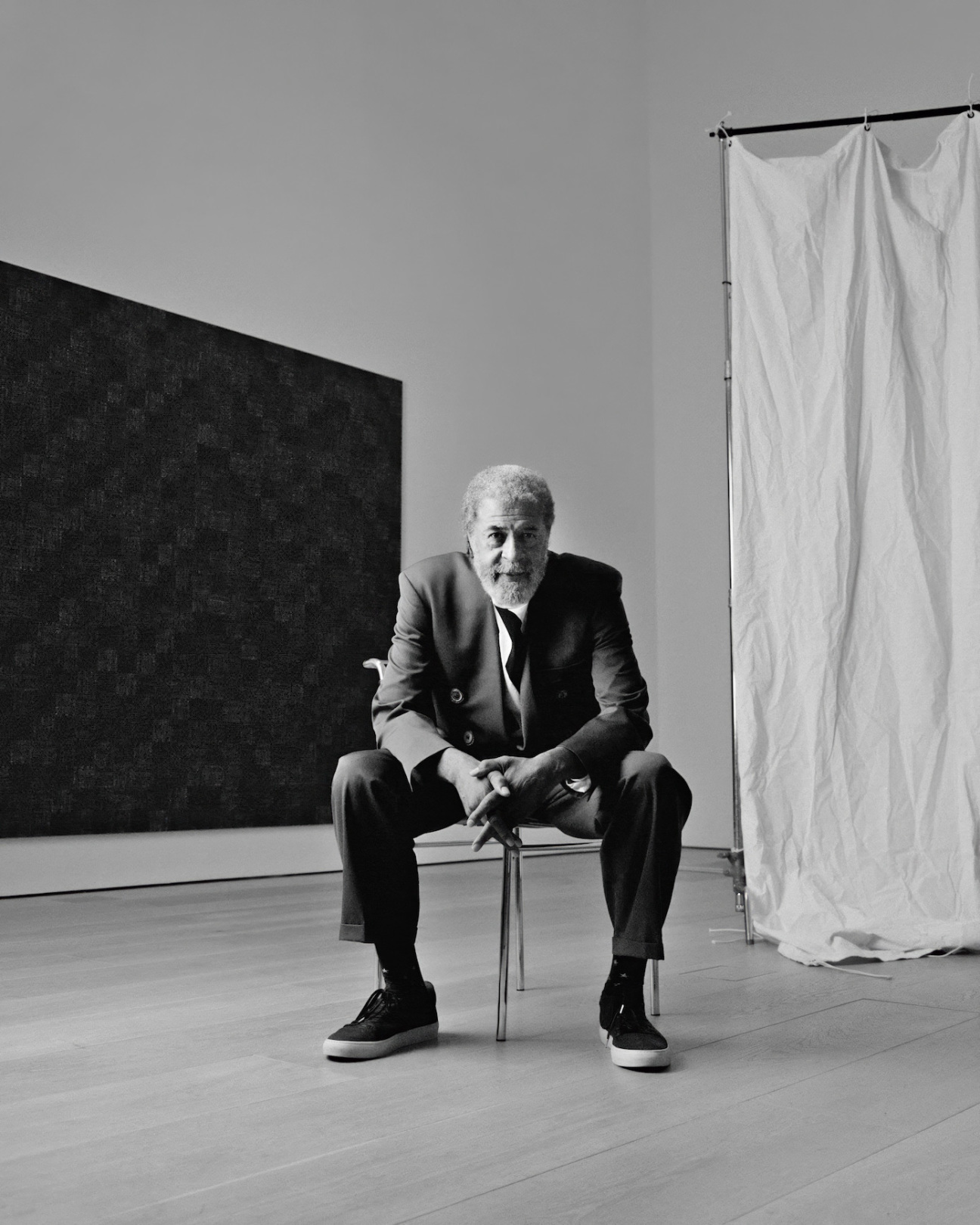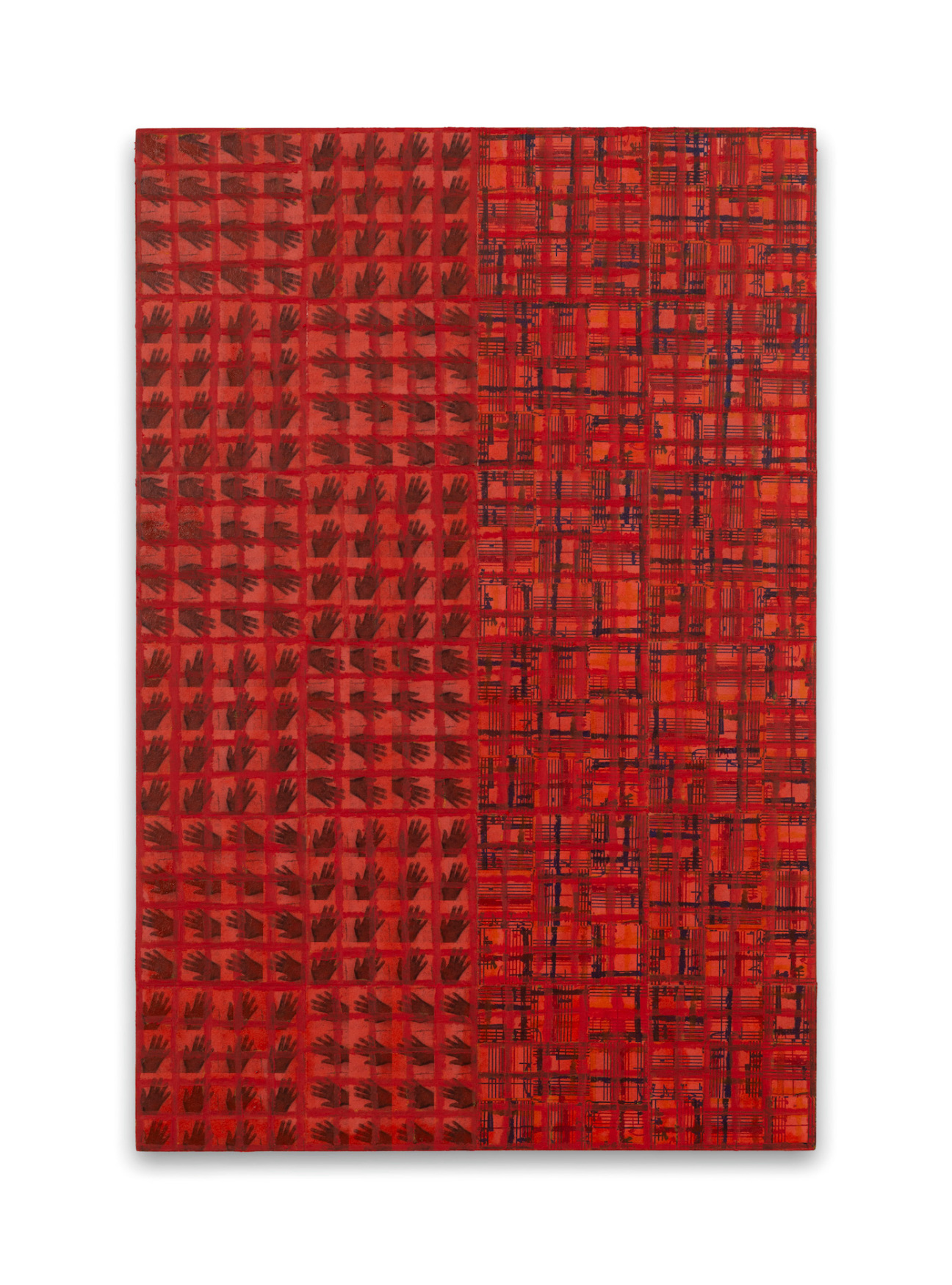
Architect Peter Marino and artist McArthur Binion have been haunting the New York art scene since the 1970s. Thanks to a meal at the old Grill Room in the Seagram Building and an introduction from an ex-wife, the two finally met face-to-face, marking the start of a decades-long friendship. Marino had been a longtime admirer of Binion’s autobiographical abstractions—he already owned five by the time they met for the first time. In the years since, his holdings have only grown.
This summer, the pair will reunite for “McArthur Binion” (July 20–Sept. 28), a show of 13 of Binion’s paintings at the Peter Marino Art Foundation in Southampton, New York. To mark the occasion, they hopped on a video call to discuss their long relationship, the horrors of Zoom, and what it was like to be an artist before, in Binion’s words, “there was something called the art world.”

Peter Marino: McArthur, are you there?
McArthur Binion: This is me. I am here.
Marino: You’ve gotta press some buttons somewhere, buddy.
Binion: I know, I’m pressing the buttons now.
Marino: Don’t you have a bright young assistant, McArthur, like I do?
Binion: She’s on vacation. [Binion chuckles]
Marino: Oh shit.
Binion: I’ve only used Zoom seven times.
Marino: Zooming is better than sex, McArthur.
Binion: No way. Fuck Zoom. [Binion and Marino laugh]
Marino: Well, McArthur, I had the pleasure of visiting you in Chicago last summer, and I bought some works—kind of like cookies hot out of the oven. They were so fresh, they were still hot. I decided to do a show because McArthur was a teacher to these young bucks like Sanford Biggers and Rashid Johnson, who had their own shows at my foundation. And yet the teacher had somehow been left out. I hope it doesn’t happen to me.
Binion: It happens. But the thing that I recall is that I actually met you through my ex-wife, Carla Jean Mayer. When I first joined [my gallery] Lehmann Maupin [in 2018], we had a meal in the Grill Room.
Marino: It was terribly posh. Can you imagine having an artist like you and me at the Grill Room?
Binion: You were seated across from Carla and I was at another table and she introduced me to this guy who owns five of my paintings, and I was like, Whoa, who is this dude? Then I ask around, and it’s clear that he has an amazing eye, an amazing collection, so from then on I felt really excellent about giving you my paintings.

Marino: I used to have an amazing pocketbook until I started collecting McArthur, you know. [Binion chuckles] They got me really good with this one, McArthur: History. Of. Application. One., 1978. That’s in my room in Southampton. I don’t know if it’s going to be in the show—it’s a little too good.
Binion: I had been saving that piece for a long time. In the ’70s—you and I are around the same age—I had an opportunity to become a substantially well-known artist, and I declined it because I felt deep down that I wasn’t ready yet. I was also invited by someone to join her gallery that recently got out of jail. I’m not naming any names.
Marino: We know who she is.
Binion: I’m sure you do. What I want to say is that I want to bring something actually from my life, from reality, and then juxtapose it with the legacy of painting.
Marino: You bring a lot from your life, McArthur. You bring your handprint to all of the paintings. Each of them has a print of your hand, and you bring your love for a lot of Black musicians—some known and some, lesser-known. I buy your paintings because they’re aesthetically fantastic, but I like your hand all over the work and I like your references to the Black jazz artists.
Binion: I’m attracted to jazz because of the abstraction. The first mention of “Visual:Ear,” the series of 12 paintings that you are referring to, was for my graduate thesis in 1973 from the Cranbrook Academy of Art. It’s really taken me 50 years to realize it. You’re exhibiting the first three of the series. At the end of the day, I’m turning 78 on Sept. 1, and at this point in my life I don’t have to be smart anymore. I can just make art.

Marino: McArthur, I haven’t been smart for years. I can’t believe you waited until 78 to stop being smart. [Marino and Binion laugh together]
Binion: I’m very happy I did… I remember everything! I came to New York in August of 1973 with $95. I was able to start working as a young artist right away at a pretty high level, because I was introduced to New York by someone I had met in graduate school named Dan Flavin. I would meet him and [the Canadian-born sculptor] Ronnie Bladen every other Monday night in Max’s Kansas City, because Monday nights were when the artists came out.
Marino: Well, when you come to the Hamptons, I’m going to take you to Bridgehampton. There is an old Baptist church that’s been turned into the Dia art museum, which has a permanent installation of Dan Flavin. I didn’t realize that you and Dan Flavin even knew each other.
Binion: When I was in school, the artist in residence was a second-generation New York painter named George Ortman. He invited Flavin and some other people out, and I met them. I remember I was having my first one-person show, and Flavin said that he would come back for my opening. I was like, “Ah, he’s not coming back.” He showed up to my opening. It was wild.
Marino: That’s a very nice beginning.
Binion: But you know, Peter, I had a seat—not in the arena, outside the arena—but I had a bird’s-eye view. There was nothing called “the art world” until the 1980s. So we were involved, Peter, before there was something called the art world. It was just us.
Marino: Well, I remember Max’s Kansas City very well. That’s when I met Warhol and the whole group because we would all go there and it was a blast. In those days, artists still paid for things with art, if you can believe it. Today, nobody does anything like that. Although, I was told that my dentist has taken paintings from several artists instead of money, for drilling cavities.
Binion: At Max’s Kansas City, one night I saw [American poet] Robert Creeley and [Venezuelan-American sculptor] Marisol drunk crawling on the floor. [Binion laughs]
Marino: I’m not gonna name anybody I saw crawling under the tables…
Binion: I’m sure you saw a lot more than that.
"McArthur Binion" will be on view at the Peter Marino Art Foundation in Southampton from July 20 through Sept. 28, 2024.










 in your life?
in your life?

